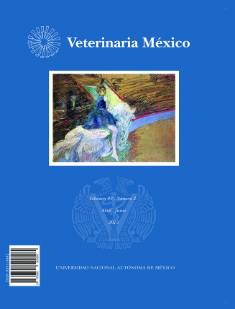Relationships between liver ureagenesis and gluconeogenesis in ruminants fed with a high nitrogen diet
Main Article Content
Abstract
Liver ureagenesis and gluconeogenesis are essential metabolic functions in ruminants. These metabolic processes are more intensive in ruminants than other mammals, especially on grazing ruminants or those supplemented with nitrogen because they absorb large amount of the ammonia produced in the rumen and only small amounts of the intestinal glucose. Diets based on the use of forages with a high content of crude protein, rapidly degradable in the rumen, or the supplementation with non-protein nitrogen, increases the ruminal production of ammonia. The excess of ammonia is absorbed and metabolized to urea by the liver. The production of large amounts of ammonia in the rumen and its subsequent absorption can exceed the liver capacity to metabolize urea causing an overcharge in the urea cycle, demanding a large amount of α-ketoglutarate and oxalacetate to produce glutamate and aspartate. Under this condition the gluconeogenic capacity of the organism is altered because these metabolites are also required in the Krebs cycle and gluconeogenesis. The relationships between liver ureagenesis and gluconeogenesis in ruminants fed a high content of nitrogen are reviewed.
Keywords:
Ureagenesis Gluconeogenesis Non Protein Nitrogen Ruminants
Article Details
License

Veterinaria México OA by Facultad de Medicina Veterinaria y Zootecnia - Universidad Nacional Autónoma de México is licensed under a Creative Commons Attribution 4.0 International Licence.
Based on a work at http://www.revistas.unam.mx
- All articles in Veterinaria México OA re published under the Creative Commons Attribution 4.0 Unported (CC-BY 4.0). With this license, authors retain copyright but allow any user to share, copy, distribute, transmit, adapt and make commercial use of the work, without needing to provide additional permission as long as appropriate attribution is made to the original author or source.
- By using this license, all Veterinaria México OAarticles meet or exceed all funder and institutional requirements for being considered Open Access.
- Authors cannot use copyrighted material within their article unless that material has also been made available under a similarly liberal license.



